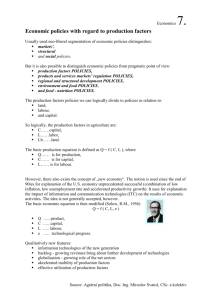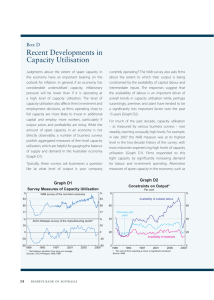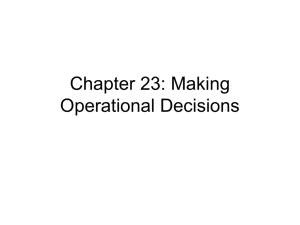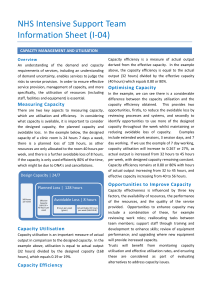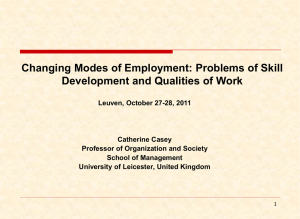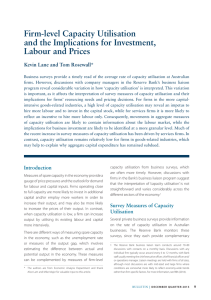UNIS Template
advertisement
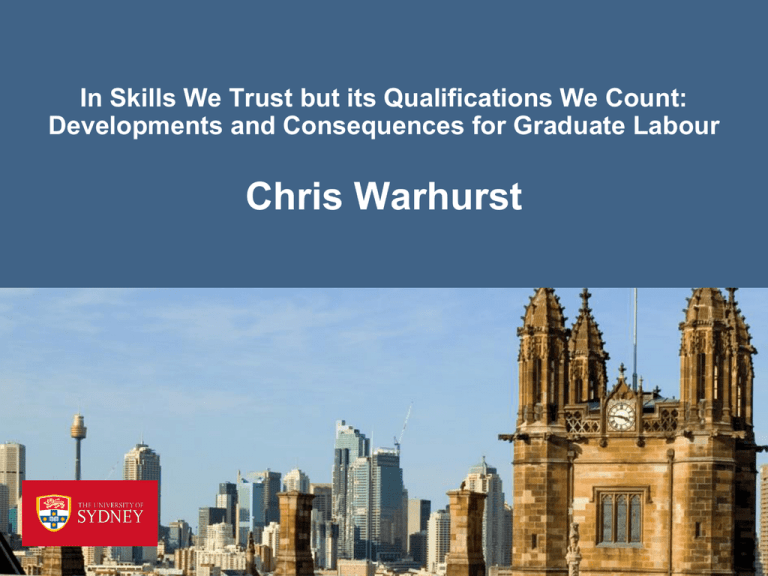
In Skills We Trust but its Qualifications We Count: Developments and Consequences for Graduate Labour Chris Warhurst INTRODUCTION: GRADUATE SKILLS › Skills an economic and social panacea – once ‘a key driver’, now ‘the key driver’ of prosperity and fairness (Leitch; also Scottish Government). › In Scotland, narrow aim – to be more productive; broader aim – to become a smarter, knowledge-driven economy. › Leads to policy interventions in supply and now demand with emphasis on skills utilisation. › Yet ‘paucity of data’ (Buchanan et al.) on skills utilisation generally and that of graduates specifically. › Want to discuss the reasons and the way forward. 2 Skill level CONTEXT: SCER RESEARCH Top Shiona Chillas Intermediate Pauline Anderson Routine Scott Hurrell Unemployed Anne Marie Cullen CONTEXT: HIGH SKILL ECONOMY CONTEXT: EMPIRICAL OUTCOMES CONTEXT: HIDDEN DEVELOPMENTS... POLICY PUSH FOR GRADUATES › 1990s focus on supply side and boosting education and training → >50% of young in HE in early 2000s. › Intervention free intervention (Keep), leaving the ‘black box’ alone. › Pressure on universities to align courses to jobs and integrate skills into courses (Willets; CBI) › Had academic support (Finegold and Soskice): WD → OD → BD. › No impact on competitiveness in Scotland, just created over-qualified workforce and under-employment in work (30-40% employees) (Strathclyde Careers Service; Felstead et al.; Skills Australia). › From mid-2000s policy shift to demand; jobs must exist that need these skills – skills a ‘derived demand’ (Scottish Government; UKCES). › Recognise now that BD → OD → WD. How to trigger is now the policy concern. 7 DEMAND FOR GRADUATE SKILLS › Some gradates still entering ‘graduate jobs’ (i.e. SOC2 requiring L4 qualifications); some cascading down SOC into previously non-graduate jobs – ‘the jobs graduates do’ (Elias and Purcell). › But what’s happening? Differing accounts: - Skills mismatch as supply outstrips demand (Felstead et al.). Too much supply, not enough demand. - However graduatisation can be a professionalisation strategy (Anderson). Leads to spiralling credentialism. - Multiple matching as different pathways into different jobs (Chillas). Maintains tight coupling of university and jobs but labour market not process focused. - Degree as a signal of ability and employers being rational; unaware of actual skills possessed. Qualification a labour market ticket rather than reflective of labour process skill demands (Warhurst and Thompson). - The skills required to do the job can be ‘soft’ or at least unaccredited (Warhurst and Nickson). KEY ISSUES IN GRADUATE LABOUR › Need to distinguish between skills that: 1. Are possessed prior to entering higher education. 2. Are acquired through higher education 3. Are required to obtain employment. 4. Are required to be deployed in work. › Means going upstream, examining family and school, and downstream, inside firms, entering the ‘black box’. 9 PROBLEM 1: POLICY TO PRACTICE GAP › Evidence base about skills utilisation ‘patchy and disparate’ (Buchanan et al.) › Firm-level practice is weak and need to engage employers. › The incentive is the need to change business strategy – most usually market pressures (Jung et al.). - Management not good at reading market signals (cf. Bosworth). - Understand government’s aim but have little incentive to open black box. › For workers more and better skills a private good, beneficial to: - Employability, pay and prospects. › For government, more and better skills delivers public good: - Reduced unemployment and poverty, and improved social mobility (Scottish Government). 10 PROBLEM 2: MEASUREMENT GAP › Not clear what employers are being exhorted to do. › Lack of conceptual clarity about skills utilisation; two issues: - 1. Failure to distinguish skills as P and J: - P=J equates to effective skills utilisation - J>P equates to workers’ lack of skills to do the job - P>J equates to workers’ skills under-utilisation. - 2. Remedial action: - J>P → use of better skills – or upskilling and doing a better job - P>J → better use of skills – or exploit existing skills to do a job better - The first is the goal of government – high skill economy; the latter addresses untapped potential of workers. 11 PROXIES ARE UNHELPFUL › Proxy is HPWS; provides seemingly neat aspirational and inspirational benchmark but unhelpful: - Take up of HPWS not high in Scotland, the UK and elsewhere e.g. Australia (WERS, Martin and Healy). - What is ‘high’ in the US is standard practice elsewhere (Boxall and Mackay). So doesn’t necessarily deliver. - Links between HPWS and firm performance ambiguous and difficult to evaluate (Payne). - Skill utilisation not measured, instead proxied e.g. QCs (Huselid) but QCs can lead to work intensification (Tuckman). - Little consensus on what constitutes HPWS or their most effective combination (Huselid; Ramsey et al.). 12 MOVING FORWARD › So definition weak and as a new policy push, not surprising that not recognised or understood by employers; if can’t understand it, can’t implement it. › Need better understanding amongst stakeholders (but not another label cf. CfE). › Don’t need to reinvent the wheel with skills utilisation. Lessons exist e.g. AMO (Appelbaum and Batt) › The use of better skills approach is important but limited: - The number of high skill jobs is constrained. - Can’t magic high skills from soft skills (cf. ies). › Better to focus on better use of skills – more realistic (and needed?). - Addresses over-qualification, under-employment and untapped potential. › But need to understand what skills in P and J; and context of the relationship. 13 BETTER UNDERSTANDING GRADUATE SKILLS › There are five obstacles to be overcome: 1 The type of analysis - Stop ‘occupational label-gazing’; need labour process, not just labour market research 2 The focus of analysis is myopic - Need to disentangle qualifications and skills 3 The focus of analysis is undifferentiating - There are different types of skill and knowledge 4 The conceptual scope of analysis is limited - Beyond skill supply still need to take skill utilisation seriously 5 The empirical scope of the analysis is limited - Need to analyse graduate and non-graduate labour; research needs to focus on where it is most applicable – services. MOVING FORWARD GENERALLY › Need inductive research through qualitative organisational case studies, preferably action research and longitudinal to evaluate outcomes (Payne). › But researchers who best understand skills wary of policy engagement and inexperienced of action research. Need to develop the critical mass of willing and able researchers › But in context of partnership and with protocols for the research and stakeholder involvement (Ramstad; cf. Better not Cheaper campaign). › Concept agreement, systemic tools, project funding and political and social partners’ support. Must also involve a co-ordinated network of colleges and universities, research institutes, consultancies, firms, labour market organisations and policy bodies (cf. SCER IAS bid). 15 CONCLUDING REMARKS › Skills policy thinking still evolving but skills utilisation push, whilst logical, is in danger of running into the sand: policy to practice and measurement gaps. › Know too little about skills utilisation generally and in relation to graduates. › Need broader focus in analysing graduate skills: development, supply, demand, deployment. › Need to disentangle skills and qualifications before re-assembling through education and training. › To do so useful to develop ‘collective interests’ (all stakeholders, bridging private/public good); develop ‘innovation ecosystem’? › Within this system need better research informed by protocols and partners. 16
